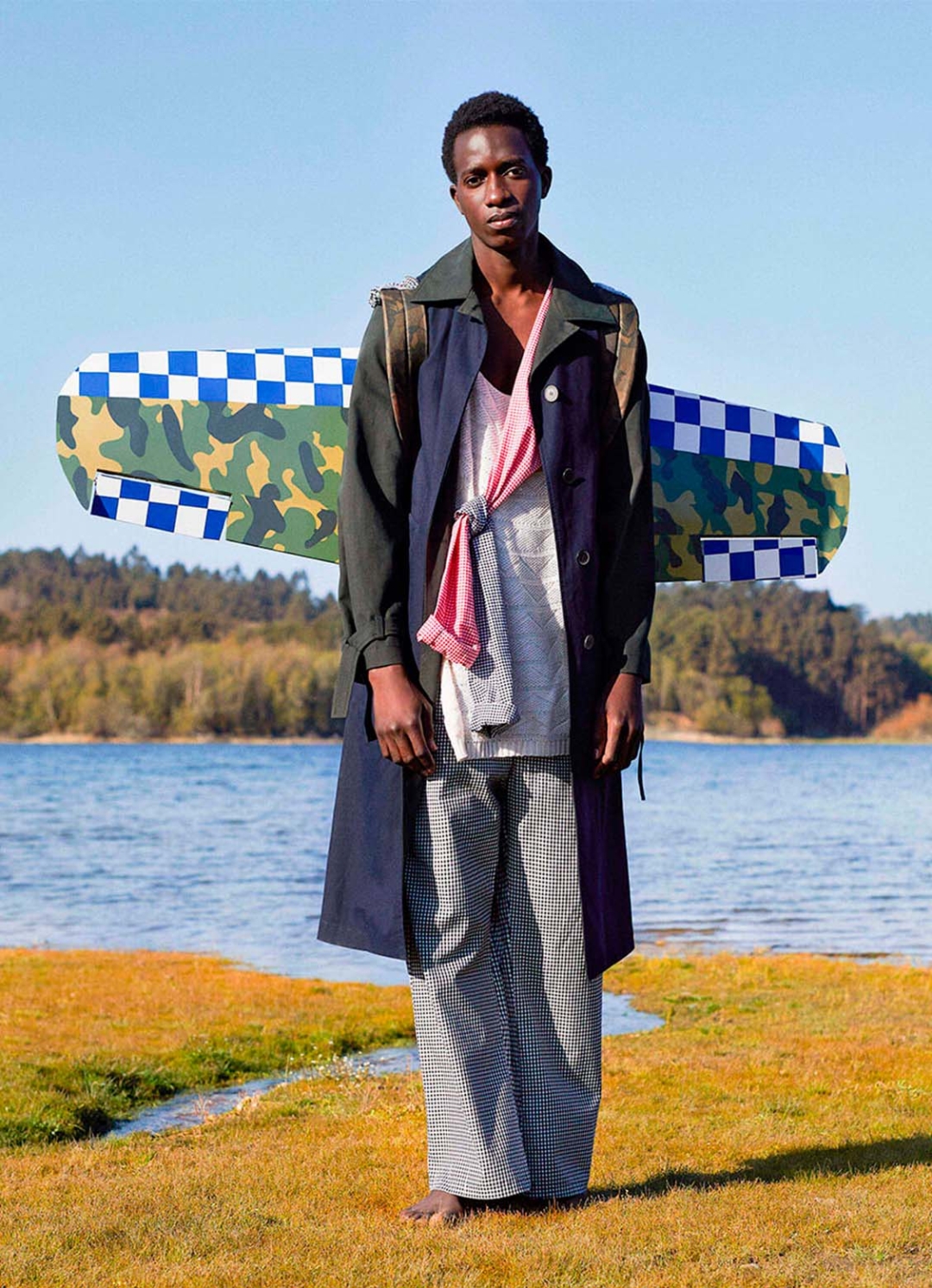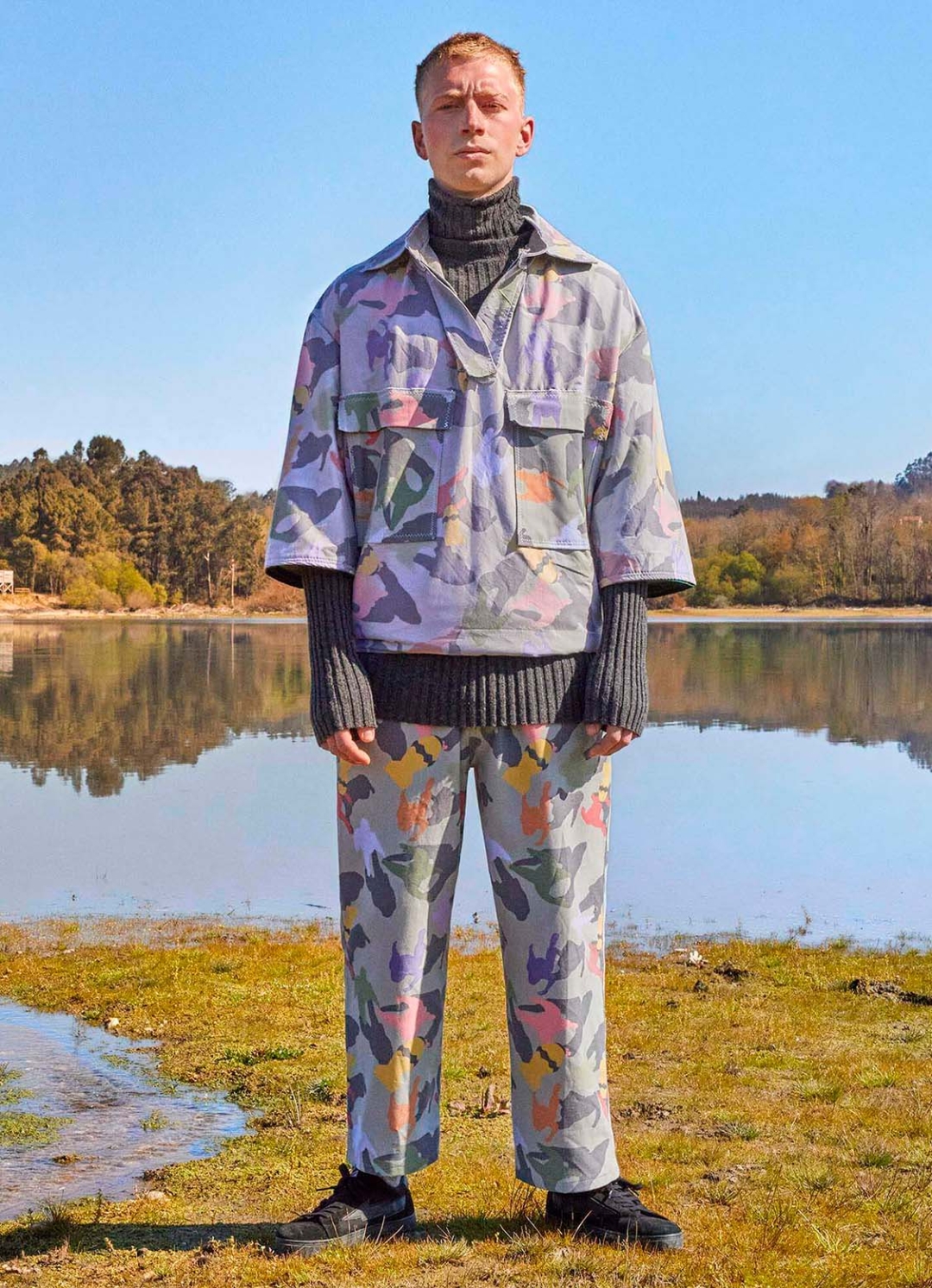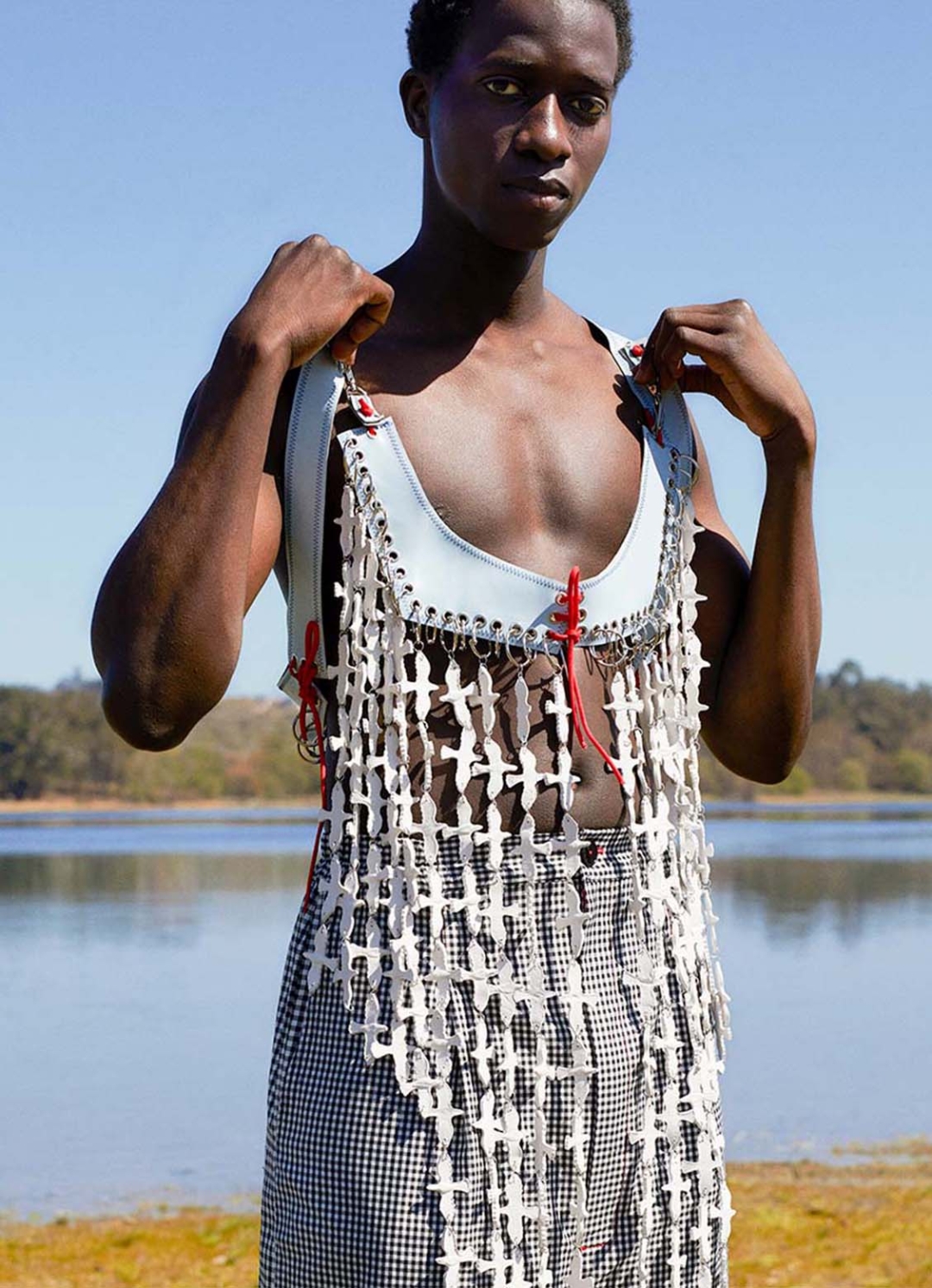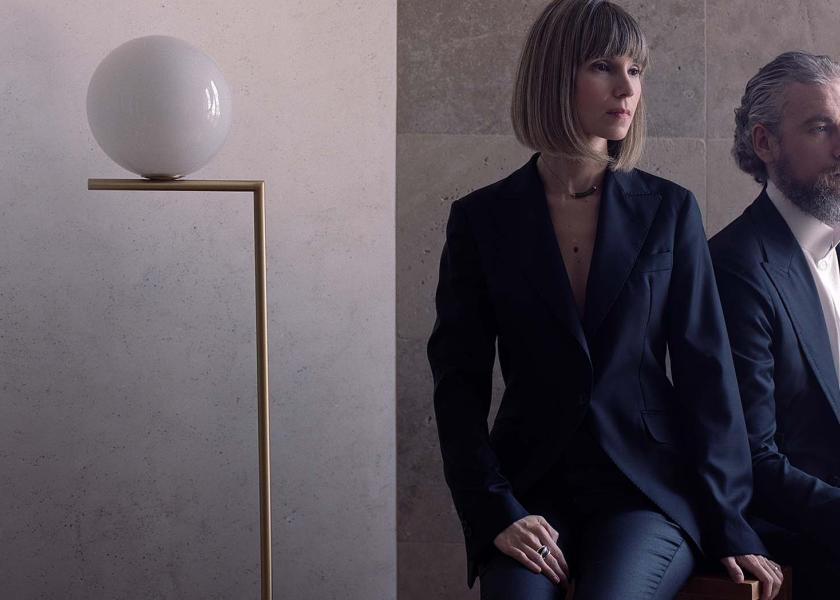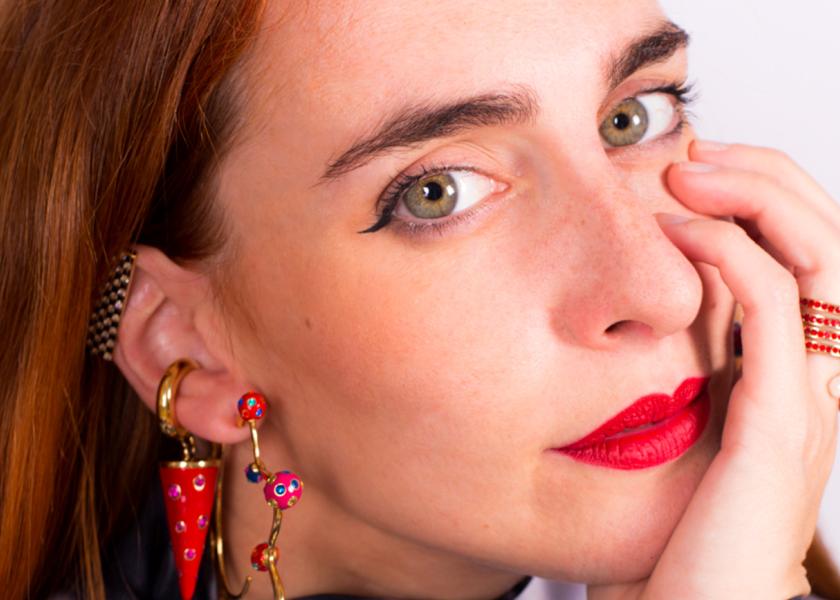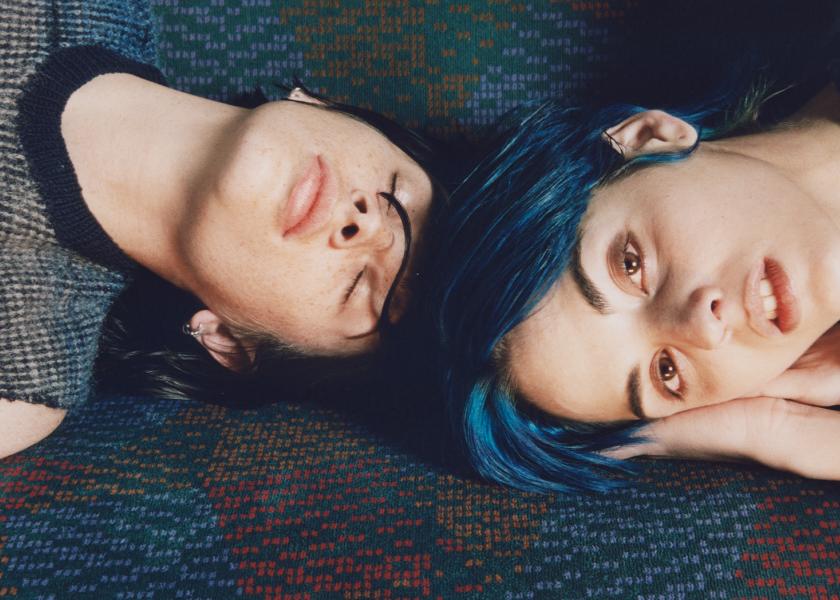Rubearth
The luxury of reusing
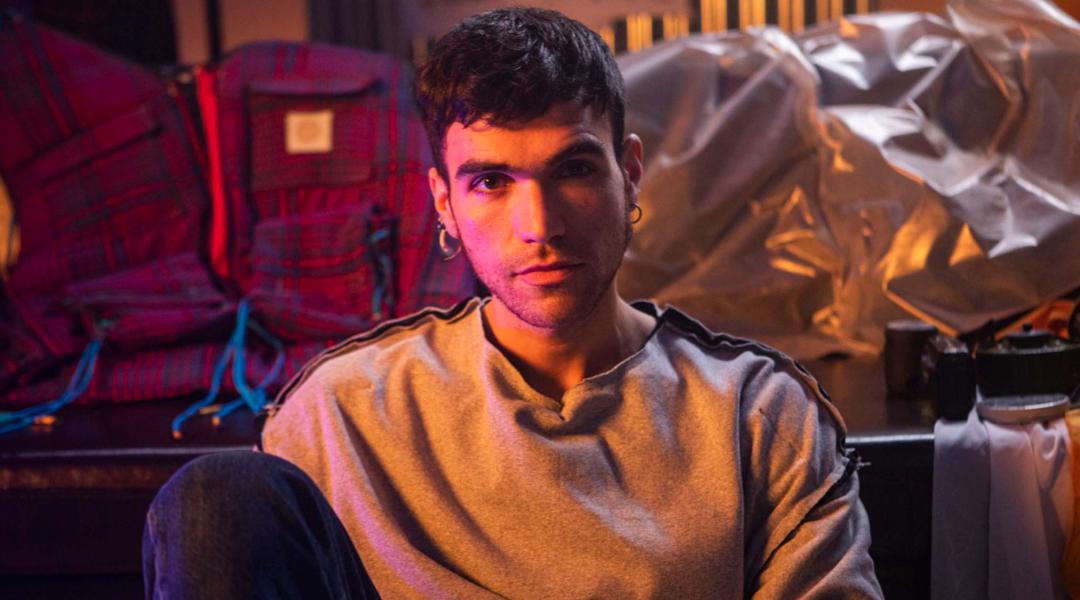
Gabriel Nogueiras is the person behind Rubearth, which has sustainably developed a project that combines personality, creativity, and commitment. Specifically, Rubearth focuses on a concept inspired by human beings and reuses waste fabrics from fashion fairs to offer unique pieces to the male market. His latest collection, Fat Man, has granted him the 2021 Mercedes Benz Fashion Talent Award.
Rewriting exclusivity based on something useless is a task that requires a solid concept and Gabriel Nogueiras (Caracas, 1988), the soul behind Spanish brand Rubearth, has made it with a project that blends together customisation and upcycling. The world of art and social reality are the foundations of this proposal that invites us to reflect, not only on the form, but also on the core: its commitment to reusing materials discarded by the fashion industry brings to life a new luxury with a sustainable vocation. Its second collection, Fat Man —inspired by the atomic bomb dropped on Nagasaki (Japan) during World War II—, granted the brand the latest Mercedes Benz Fashion Talent Award.
Two collections have been enough for Rubearth to win the Mercedes Benz Fashion Talent Award. How does that success land?
With great excitement. Our project has artistic values and we’ve worked on consolidating it through its image. This award helps us to formalise the brand and develop a more business-focused vision. Also, the prize money allows us to work on our upcoming collection.
When did you know your talent lied in fashion?
It was a gradual process. I started studying Advertising and Public Relations but got bored with the technical side. Nevertheless, I was fascinated by the visual aspect. I thought that was where my purpose lied and started to develop it. When I graduated, I started studying Textile and Fashion Design at ESDEMGA (Pontevedra) and fell deeply in love, it connected everything. I was fascinated by that world and needed it in my life.
“We offer the customer a unique garment: we have an atelier philosophy and don’t want to create fast fashion”
What education makes Rubearth unique?
I’ve worked with large multinationals, like Inditex, Bimba y Lola, or Carolina Herrera. I also did an apprenticeship in the luxury sector, Givenchy, specifically. I believe that this blend of industry and design helped me get my brand concept right. What I offer the world, apart from fashion, is an ethical vision.
How does that paradigm come to life?
I realised that many metres of fabrics are wasted at textile fairs —from presentations, sample collections or developments—. Others, due to their cost or because they don’t fit the market, are discarded and stored, never to be seen again. We set our sights on them and recover what we’re interested in. These are high quality fabrics, made in Italy or Portugal. There are limited amounts, between three and twenty metres per type of fabric, and we create garments with them. We use the same pattern but manufactured in different fabrics. Thanks to this, we offer the customer a unique garment: we have an atelier philosophy and don’t want to create fast fashion.
For different fabrics to work with the same pattern, does this require extra research?
I find it relatively easy. If we want to make a raincoat, we choose different twills that allow us to create the same shape and drape... We also make a proposal before presenting the piece to the end customer. We send them a sample of the fabric, and if they agree, start the assembly.
So, you’re in close contact with the customer, is that part of the brand’s DNA?
We want the customer to feel looked after and pampered when they buy a product, for them to know that it’s a unique high-quality piece. We go against the current system. Everyone wears the same thing, or in the same way, and we want to bring back that feeling of wearing something unique, of feeling comfortable in the garment because there’s a philosophy, a personality, and a design behind it.
As well as this ethical proposal, which other sustainable initiatives do you carry out?
All our knitwear is sustainable. I found out that a huge warehouse with knitwear fabric for baby clothes closed and they weren’t planning on opening again, so I decided to take it on and manufacture all the brand’s knitwear there. Furthermore, this is a local production. The lady who makes it works close to that warehouse and both her and the rest of my production team, who live in different places, have adapted to working digitally.
“Everyone wears the same thing, or in the same way, and we want to bring back that feeling of wearing something unique”
Your latest collection, Fat Man, explores a tragedy, do you think fashion is a tool for social reflection?
I apply it in this sense, it’s one of our brand characteristics. We choose controversial topics that invite you to reflect. With Fat Man, I used the tragedy of the atomic bombs dropped during World War II. Within the fashion show, you could see a progression: it explores innocence, reveals cruelty, and ends in peace.
Which qualities must a topic include for you to turn it into a fashion object?
First, it must work graphically because I need to create interesting prints. For example, the Fat Man collection includes a military print made with the shadows of people that the bomb is going to fall on. The result is appealing, but there’s a story behind it. That’s another factor: a strong concept that allows me to develop it and put it into context; for example, we made coats and covered them with bulletproof vests to be consistent.
